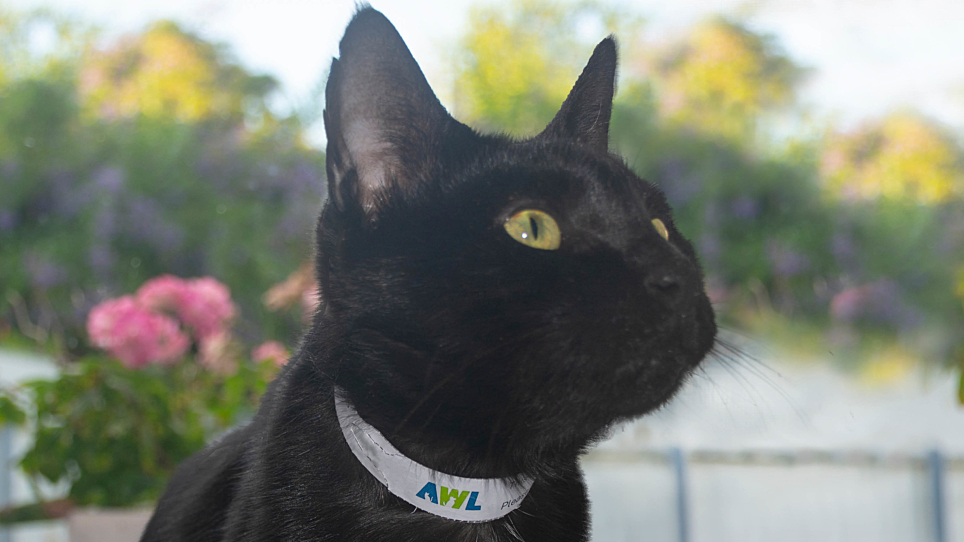ID or no ID?
A microchip and ID tag on a collar helps reunite a lost cat with its owner, reduces theft and shows the community that the cat definitely has someone caring for it.
If the cat is handed into AWL, it gives us a much better chance of finding the owner.
If there's a cat in your neighbourhood with no ID and you're not sure if they have an owner, attaching one of our paper cat collars is an easy way to 'ask' if they have an owner.
This will open up the chance for a civil conversation with your neighbours about cats in your area. Remember to be respectful with all discussions; we all want the best outcome for both the cats and the community.
Only try to use the paper collar on a friendly, approachable pet. Don't attempt to put a collar on a cat that's unwilling to approach you or looks stressed.
How to use the collar:
- Click here to print out the template
- Add your contact details (name and mobile is best)
- Cut out the template and cut out the hole to make the collar the right size
- You should be able to fit two fingers comfortably between the collar and the cat's neck. The cat may tense when you put it on, so recheck the fit after a few minutes and adjust if necessary
- Place the collar around the cat's neck (making sure the writing is visible) and insert the rounded end into the hole you've cut
What to do if there's no response:
- Try at least three times. The collar may have been damaged, fallen off, or removed by the cat
- It could also mean that the cat has gone home and the owner's taken off the collar without calling you
- Talk to your neighbours
- If you have tried these steps, but no owner can be found, contact the council
What to do if your cat comes home with an AWL paper collar on:
This means that your cat is visiting one or more of your neighbours but has no visible form of identification. As a result, your neighbour is unsure who owns the cat.
Your cat must wear identification to alert people in your area that the cat is owned.
People who see your cat without ID may bring them into AWL thinking they have been abandoned or need rescuing. Without any ID, it's unlikely we'll be able to reunite you with your cat.
While microchips can store all of the information required to return the cat home, people still need to take your cat to a vet to read the microchip. Even then, it's only helpful if you keep the details up-to-date.
Put some form of visible ID (like a collar) on your cat. Add a tag and contact number, or write your number on the inside of the collar.
If your cat is spending any time outside, it is vital to get your cat desexed. If you have the means, please take your cat to your local vet, and get it microchipped while you're there.
